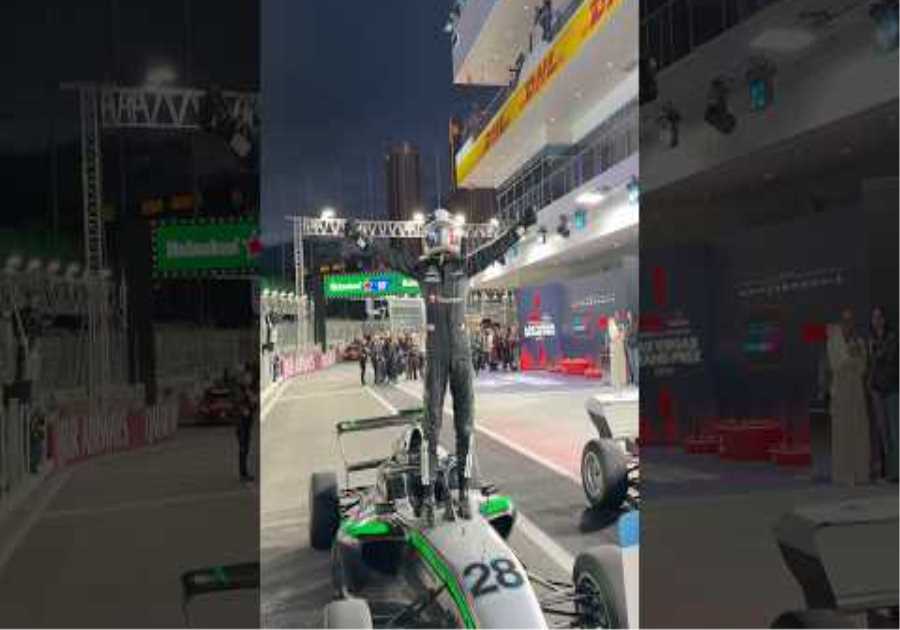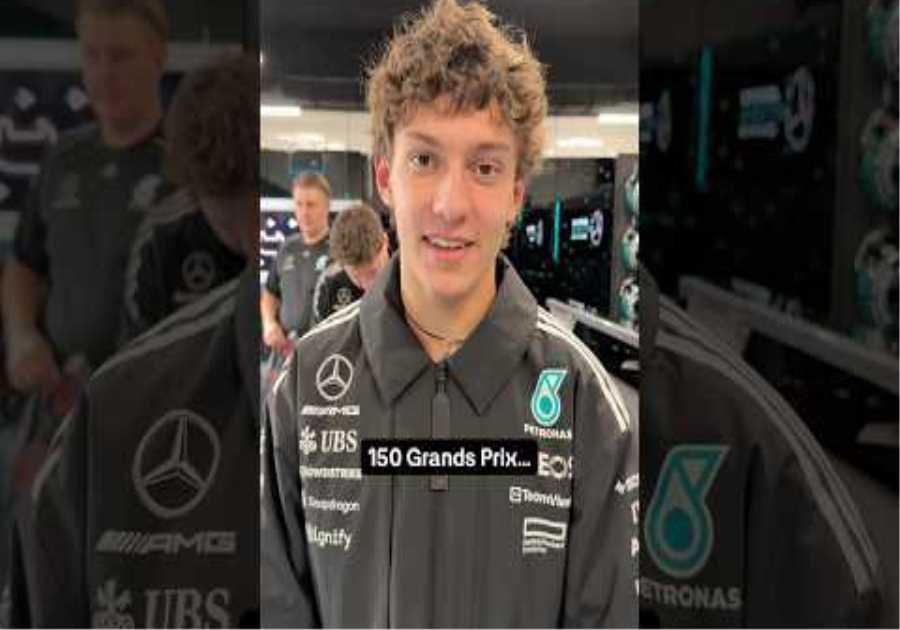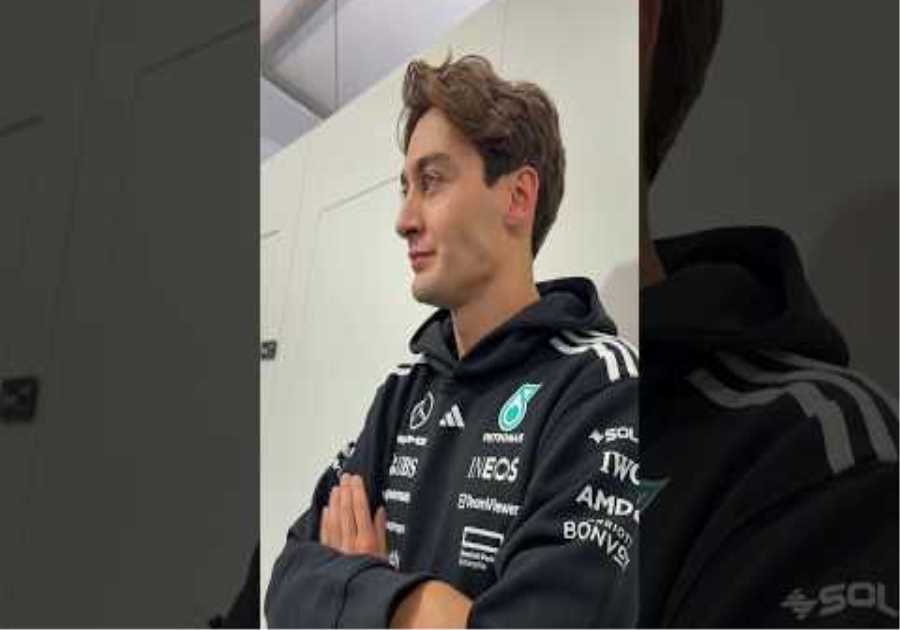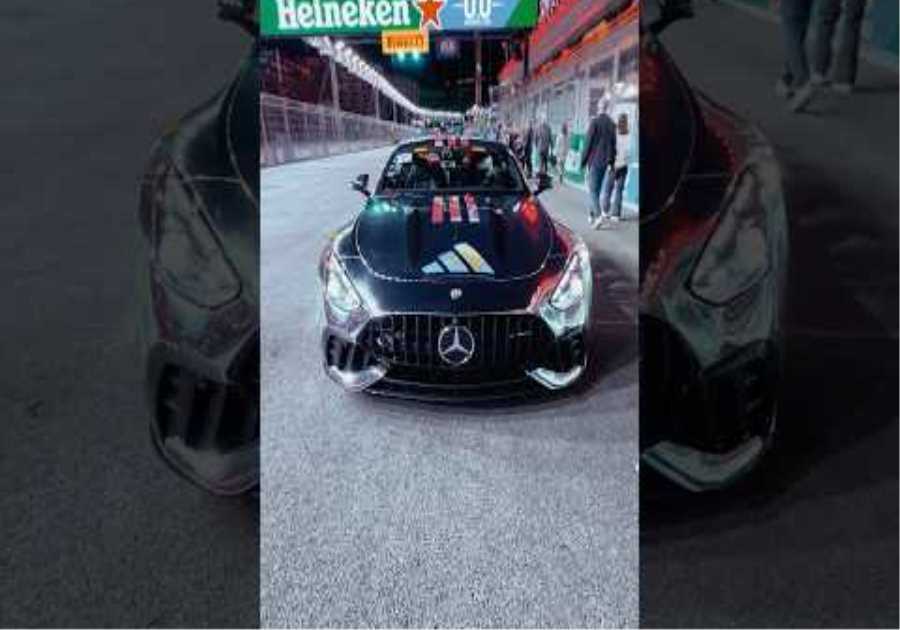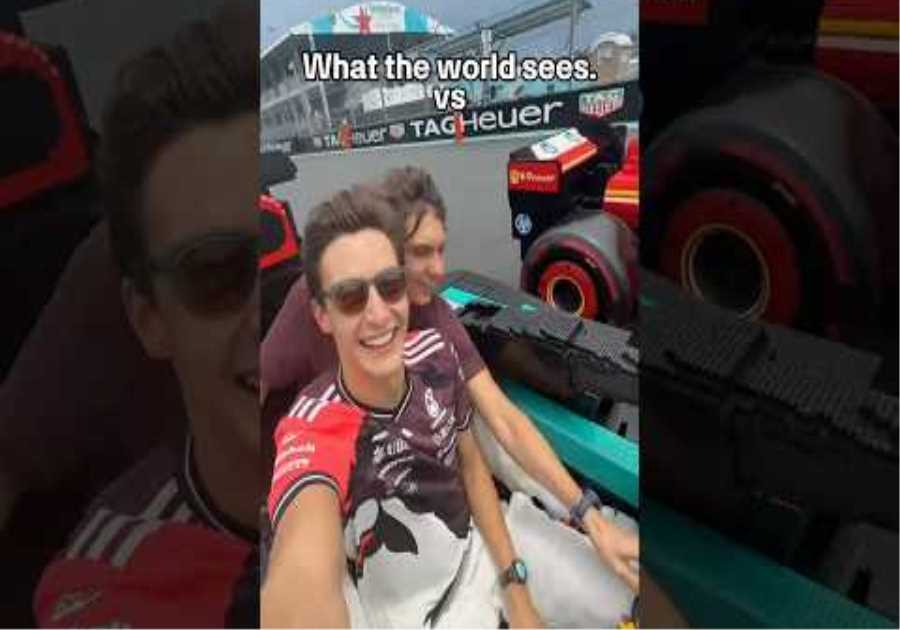
The FIA is rolling out some major rule changes halfway through the 2022 Formula 1 season. Though tweaks to the guidelines are not unheard of, this year includes an unprecedented penalty. Why? The racing championship swapped to an all-new car this year, and it is putting Formula 1 drivers at risk.
The all-new Formula 1 car was designed to make races more exciting
Max Verstappen leads a Formula 1 race | Dan Mullan/Getty Images
RELATED: Watch The Honda Red Bull Racing F1 Car Hooning Around New York City
Formula 1 has been around since 1950, but some say the modern racing lacks stakes. For example, Lewis Hamilton has won seven championships since 2008. Mercedes has taken seven of the last eight championships. The FIA introduced a revolutionary rule change for the 2022 season, hoping to shake things up.
The first element of the new rules is the all-new car. The old car made most of its downforce with a front and rear wing. The result was so much turbulence behind the car, that passing became very difficult. The 2022 car is bringing back ground effects, making much of its downforce with an aerodynamic “floor” (also called a plank) to rapidly evacuate air from beneath the car.
The second element of the new rules is a cost cap, limiting the amount each team can spend on research and development. The engine manufacturers must assemble their powerplants from commercially available materials and can’t hold onto rare materials for F1. Certain especially costly systems, such as suspension with adaptive hydraulic dampers, are banned too.
Porpoising and bottoming out are making the races too exciting

Carlos Sainz’s Ferrari and Lews Hamilton’s Mercedes | Clive Mason/Getty Images
RELATED: Nascar Tries To Keep Drivers From Cooking Like ‘Turkeys’ Inside the Next Generation Race Car
The two major changes for Formula 1’s 2022 season are conspiring to create major safety issues. Firstly, the new aerodynamic floor reduces the race cars’ ground clearance. On certain tracks drivers are bottoming out.
Secondly, the aerodynamic floor has proven so effective at creating downforce that it is pulling the cars too close to the ground. How low is too low? Too low is simply when the car cuts off airflow through the channels of the aerodynamic floor. Then the car loses downforce, springs up to a higher ride height and begins to generate downforce again.
2022 Formula 1 cars can cycle through this dangerous phenomenon so rapidly they are buffeted like an airplane in turbulence. Fans are colloquially calling it porpoising, and it threatens to injure drivers and cause a major crash.
To make matters worse, the new spending cap is making it difficult for even the wealthiest F1 teams to adapt to the new cars. Mercedes, for example, has struggled with porpoising as much as any other team.
Formula 1 is implementing a new penalty

Max Verstappen’s Red Bull Racing car | Alex Pantling – Formula 1/Formula 1 via Getty Images
RELATED: Florida Man Waterskis Barefoot Behind a Formula One Car on Its Way to the Miami Grand Prix
One easy way to prevent porpoising is to raise the ride height of the affected Formula 1 car. Why doesn’t every team do this? Because the higher a Formula 1 car rides, the slower it must navigate the track.
The FIA’s solution to this struggle between teams and officials is simply to outlaw porpoising. That’s right, starting with September 4th’s Belgian Grand Prix, any team with a car oscillating up and down to quickly could be subject to a penalty. This adds an incentive for teams to raise their ride height if their car is porpoising.
A second aspect of the rule change is to regulate the amount of flex the aerodynamic floor can have. The FIA is unhappy with Ferrari and Red Bull’s interpretations of its aerodynamic floor requirements, believing they were seeking a sort of loophole with more flexible aerodynamic floors that don’t create as much downforce as they should. What’s more, it is difficult to measure the oscillation in a car’s ride height if the aerodynamic floor beneath it is also flexes quickly.
Next, read what drivers are saying about porpoising in Formula 1 or see the latest rule changes in action in the video below:
*{padding:0;margin:0;overflow:hidden}html,body{height:100%}img,span{position:absolute;width:100%;top:0;bottom:0;margin:auto}span{ height:1.5em;text-align:center;font:48px/1.5 sans-serif;color:white;text-shadow:0 0 0.5em black}

” src=”https://www.youtube.com/embed/VP8KNdfdStc?feature=oembed” frame border=”0″ allow=”accelerometer; autoplay; clipboard write; encrypted-media; gyroscope; picture in picture” allowfullscreen>
RELATED: Formula 1 Top Speed
Did you miss our previous article...
https://formulaone.news/red-bull/rll-hires-veteran-f1-engineer-as-technical-director

